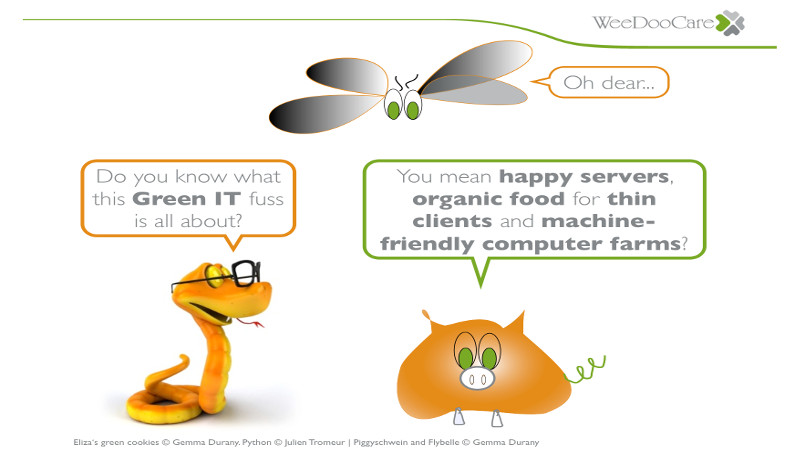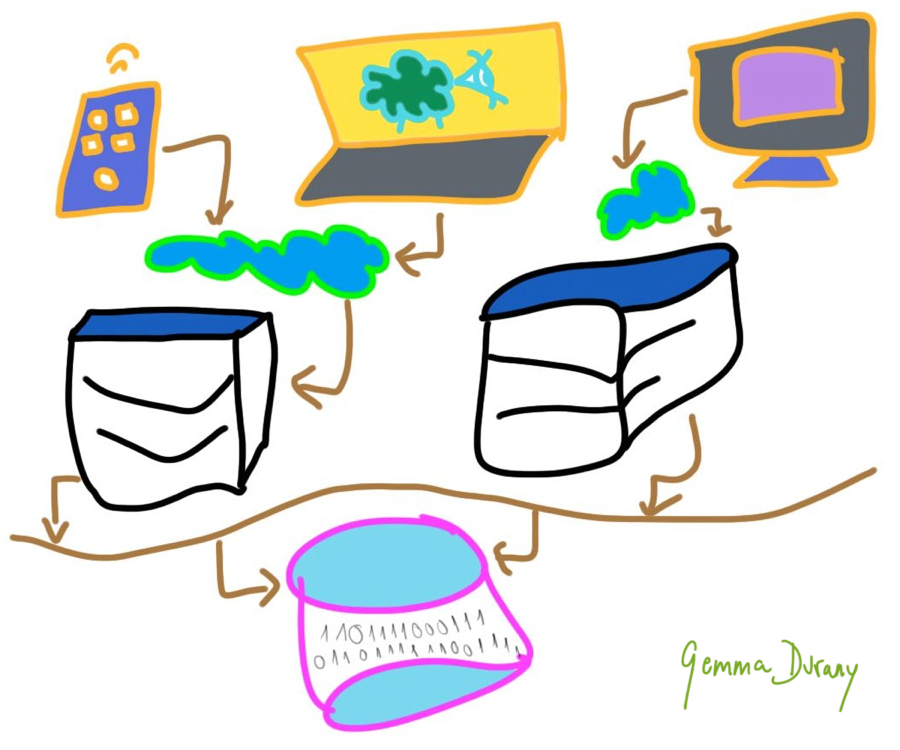Introduction
What is information?
IT stands for Information Technology, that is, technology designed to efficiently send and receive information over long distances. Informare comes from giving form to the mind. Information is not the raw data, but what we make out of it. Humans transmit information using natural languages. All languages, also programming languages, use a set of symbols to "code" and "decode" messages. IT uses electromagnetic waves to transmit information at the speed of light by means of the binary code, because it is simple to handle with electromagnetic waves and fits well to the behavior of certain physical systems, e.g. flashes of light (on/off), sound (on/off), switches in electronic circuits (on/off), etc.
A bit is the basic unit of information, and computer storage,
and exists in 2 states: 0 or 1. Quantum computers, still in research, take
advantage of Heisenberg's uncertainty principle in quantum physics to become
much faster than current computers. They use quantum bits (qubits),
which can take the values 0, 1 or a superposition state of 0 and 1.
1 Byte consists of 8 bits, and
can contain an
ASCII
character e.g. a letter, or a non-visible character, like a blank.
Example: the character a is represented by
the binary sequence 1 1 0 0 0 0 1. Asiatic languages have more letters in
the alphabet than languages based on the latin alphabet, and require 2-bytes to build a character.
Analog Signals code and decode messages
in electromagnetic waves, e.g. radio waves, through mapping of voltage tensions to 1 or 0.
Digital signals take advantage of Fourier transformations of electromagnetic waves,
which result in narrow voltage signals that can be easily mapped to 1 or 0.
Fiberglass transmits binary code through decoding of light packages.
Multi-layered Client / Server architecture
A multi-layered IT architecture makes the Cloud, that is, the internet, possible. The first computers were big and monolithic. Today they consist of several layers, and components.
- Client : IT component (software / hardware) requesting information and services from Servers
- Server : IT component (software / hardware) providing information and services to Clients
- Database Management System (DBMS) : The server (software / hardware) specialized on efficient processing of big amounts of data. They are often relational, that is, they are built with columns and rows directly related to each other. They speak SQL (Structured Query Language), and are highly scalable, that is, they serve the needs of lots of concurrent users. Nowadays they take big advantage of In-Memory Computing advances, and love big amounts of RAM. SAP HANA is a good example.
You can always add an additional server to your IT network in order to improve the performance, e.g. speed, of your system. It is like hiring more employees if you get more work. For Enterprise Systems, e.g. Enterprise Resource Planning (ERP), Customer Relationship Management (CRM), or Business Intelligence (BI), SAP takes full advantage of a 3-tier client/server architecture. SAP relies on a scalable Database Management System with partitioning options to manage data, several so-called Application Servers to manage the application part, and several Graphical User Interfaces to display application results to the end-users. If you get more data load, you can always add more app servers...
Basic Hardware Components are Disk, CPU and RAM. CPU stands for Core Processing Unit, that is, the processing/calculation brain of the computer. Computer systems take advantage of RAM (Random Access Memory) for fast data processing. RAM is much faster than Disk and consists of electronic chips that require electricity. Therefore RAM data gets lost after you switch off the computer (non-persistent data). SSD Disk is much faster than traditional magnetic hard drive Disk, but it’s still slower than RAM.
By the way, you cannot really delete or "wash" your data from an SSD Disk like you could do for a rotating magnetic disk. Reseting your disk, for example, in order to sell your old computer, resets the binary addresses of older data so that they can be replaced by new data, BUT this does not really physically erase any data. However, SSD disks are not so easy to hack as magnetic disks used to be. To get to the data you need to be a specialized hacker, or the CIA.
IT, global warming, and the ecological weight of things
Consumer products need energy for production, transportation, and waste disposal. This energy may, or may not come from renewable sources. Products are built of material resources, and some materials require complex mining, e.g. gold, or rare earths. The material content of things, or ecological backpack / ecological rucksack, complements the ecological footprint, and indicates the environmental weight of things. The ecological rucksack of electronic devices is 400-600 times the actual weight of the product. Example: A desktop computer has an environmental weight of about 1500 kg. In addition, software promotes material growth.

